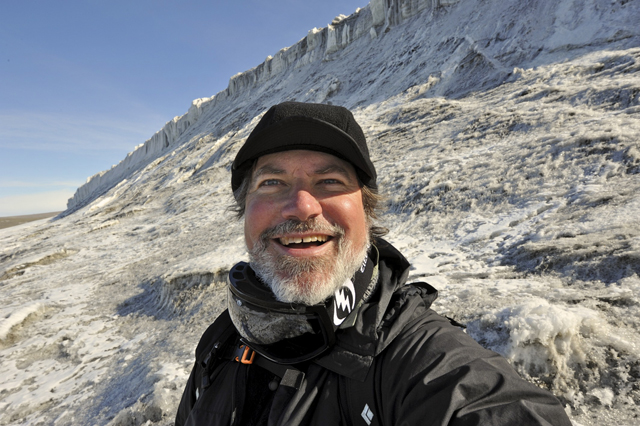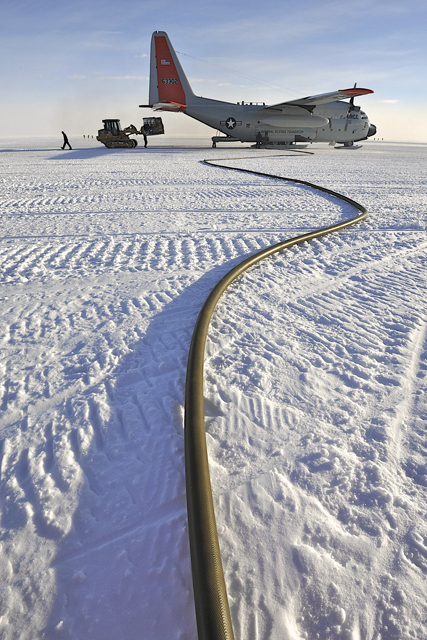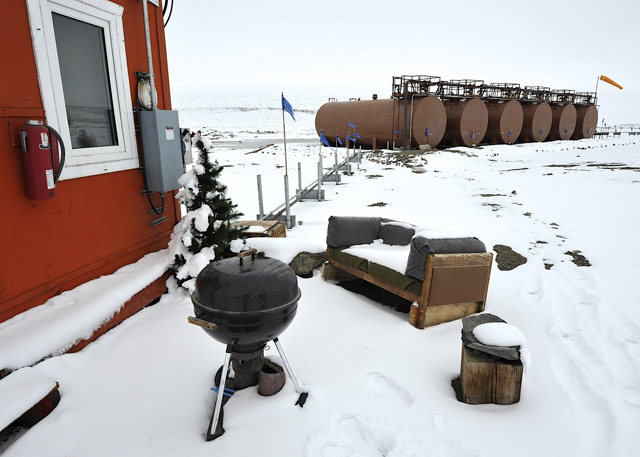Science takes offWriter explores connection between aviation and polar researchPosted February 11, 2011
“It’s so big!” somebody ahead of me said. Feeling like an astronaut in my red parka and white boots, I followed the others out of the U.S. C-17 military plane and onto the snow of Pegasus Ice Runway Whoever ahead of me had said it’s big was sure right — the view all around us was big ... big and white and magnificent. We were standing on top of five feet of tamped snow on top of 150 feet of glacial ice on top of a few hundred more feet of the Ross Sea. More Information
As a visiting author sponsored by the National Science Foundation’s Artists and Writers Program Aviation in Antarctica started on Feb. 4, 1902, when Robert Falcon Scott went up in a tethered hydrogen-filled balloon off the Ross Ice Shelf Once Charles Lindbergh crossed the Atlantic solo, more distant goals were attempted, and the world began to look south. Who would be the first to fly over the South Pole? On Nov. 28, 1929, an answer was provided by an audacious team led by Richard Byrd. They used a Ford Trimotor, flying nonstop on the outbound leg but stopping to refuel from a cache on the return leg. There is a reason so many camps and mountains are named after him; Adm. Byrd returned to Antarctica on four other expeditions, including Operation Deep Freeze in 1956-1957. Reading his book “Alone” in the public library when I was 10 was one of the main reasons I had wanted to come to Antarctica. It was only later, reviewing technical papers on geology or learning about ground-penetrating radar, that I realized how much research airplanes facilitate. But was I being mistaken? Is there really a strong relationship between flying and doing science? “Oh, it’s simple,” Ian Dalziel “It’s so much better organized these days. Even the safety rules have safety rules.” Just to pick one region as an example, in the McMurdo Dry Valleys What fascinated me was the way the infrastructure worked. Some buildings date from the first Navy days. At Marble Point, helicopters stop to refuel, and when they get the chance, the pilots can top off, too. “We do what we can to help — if it’s only a cup of coffee and a place for them to grab a sandwich,” says Marble Point manager Bodie Davies. “Some days it’s busy as Heathrow here, with loads coming and going all day long.” Marble Point has a crew of just three: Bodie the manager, Karen the cook, and on a two-week rotation, a fuel technician, who was Tonya when I was there. Everybody helps with all of the jobs — including putting up with me. An unexpected change in weather kept me there four days. We could have had a barbecue, if only the wind would have let up.1 2 Next |



For USAP Participants |
For The Public |
For Researchers and EducatorsContact UsNational Science FoundationOffice of Polar Programs Geosciences Directorate 2415 Eisenhower Avenue, Suite W7100 Alexandria, VA 22314 Sign up for the NSF Office of Polar Programs newsletter and events. Feedback Form |





